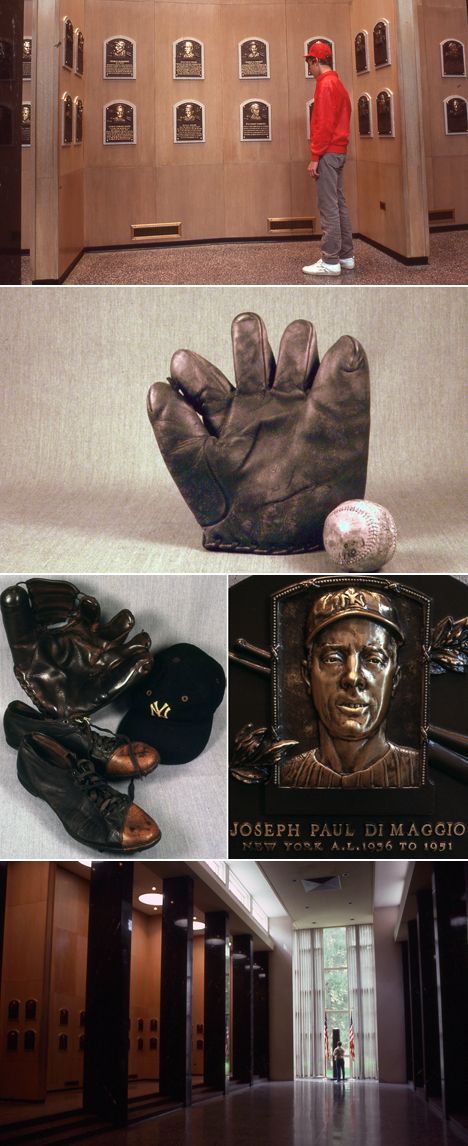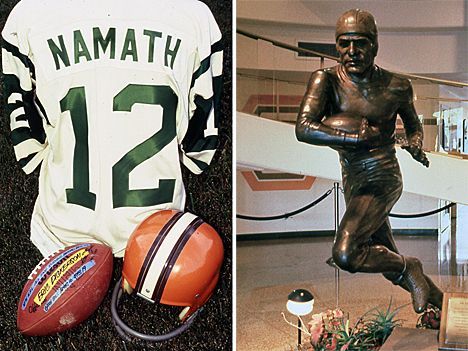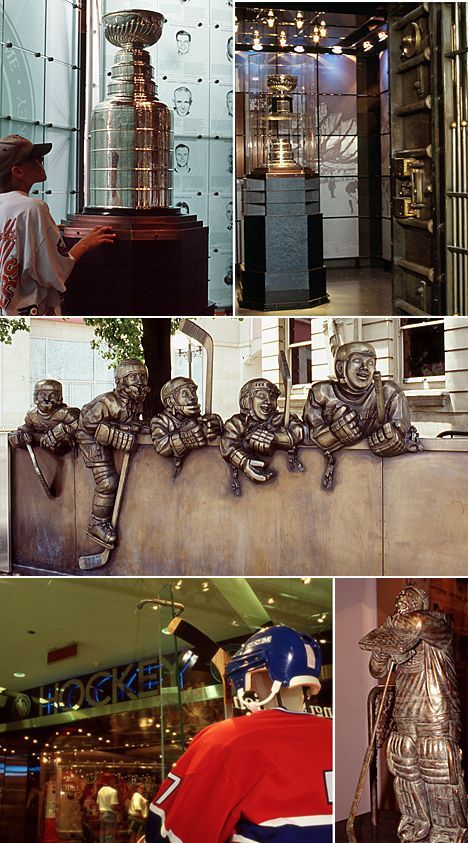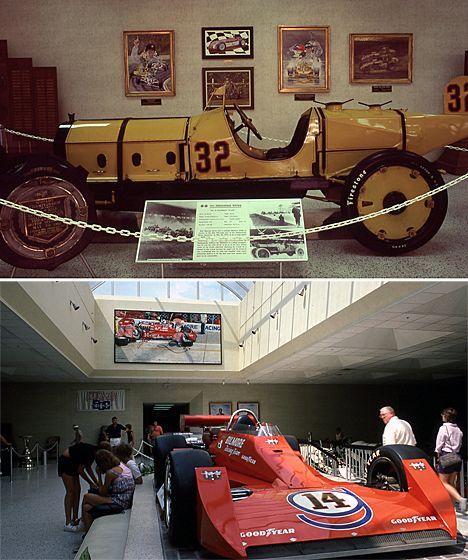Article
Halls of Fame of the "Go Team!" Spectator Sports
Author(s):
The history of sports in this country is the history of America. Some sports enthusiasts say when they go they are entering shrines to their heritage and magnificent moments that may have impacted their own lives.
All photography by the authors
Even as the internet dominates the news, Americans continue to read their newspapers just for, some cynics say, the sports pages. Maybe, but no one can doubt the huge impact sports plays in our lives — although we occasionally hear from observers of the San Diego scene that the reason our local baseball and football teams seem uninspired is because players sense the fans would rather be on the beach.
shrines
Consider the baseball park, for a moment. It’s not just a place where intellectuals like George F. Will go to escape in comfort. It’s more. It’s Norman Rockwell’s America. Indeed, the history of sports in this country is the history of America. The halls of fame of those sports show the events that have thrilled American generations for years. Some sports enthusiasts say when they go they are entering to their heritage and magnificent moments that may have impacted their own lives.
Baseball
A veritable hush envelopes us as we come into the National Baseball Hall of Fame in Cooperstown, N.Y. It’s like entering a church. To some it might well be.
Mrs. Robinson

It wasn’t hard for members of the Red Sox Nation like us to receive Yankee heirlooms in a private room for our photography. Who wouldn’t get goosebumps arranging Joe DiMaggio’s glove, Lou Gehrig’s cap and Babe Ruth’s shoes? Perhaps a mistake because visitors won’t see that grouping in Cooperstown.
Basketball
Even those who don’t follow this sport have heard of the historical rivalry between the NBA greats Bill Russell and Wilt Chamberlain. In the third recreation of the Naismith Memorial Basketball Hall of Fame in Springfield, Massachusetts they can see Russell’s number six Celtic jersey and the ball that gave Chamberlain 37 baskets in 37 attempts.
We are surrounded by names and numbers but that’s OK: the numbers are how the names got into the Hall of Fame. Baseball is a mathematician’s delight. But it’s surely a joy for enthusiasts, too, to discover Cy Young’s glove and the ball that gave him his 500th win. And the award plaque to Joe DiMaggio — more than Marilyn Monroe loved him. He was the idol of fans and an inspiration to songwriter Paul Simon in even.
recent
True in all the halls of fame visitors can see more heroes but, somehow, the glory of the past lies in the past.

Visitors can also see the size 22 shoes of Bob Lanier. It’s no surprise to find tall basketball players have big feet. Lanier’s shoes preceded him into the Hall of Fame and he joined them later in 1991. They are now bronzed. Shaquille O’Neal is said to have worn 22s also.
Football
We are welcomed at the Pro Football Hall of Fame in Canton, Ohio by the statue in the foyer of Jim Thorpe, the legendary star of the Canton Bulldogs.

We explain what we’d like for a photograph. We need three specific jewels from their “treasury,” namely Joe Namath’s number 12 jersey at the time he earned the incredible contract sum of $400,000 in 1968; the ball Eric Dickerson carried when he reached 2,105 yards in one season; and the helmet Jim Brown wore when he was rushing 13,312 yards over nine seasons. And, er, we’d like to photograph them outside, on grass!
Their benevolent agreement was as unbelievable as Broadway Joe’s 1968 contract but travel photographers say “You can ask for anything provided you can accept the answer ‘No.’”
Horse Racing
The National Museum of Racing and Hall of Fame in Saratoga Springs, N.Y. celebrates a world that’s possibly from another era. Like the early days of lawn tennis, racing takes people back to a time when life was simpler — especially if they were winning.
We gaze at the binoculars, notebook and the “75 year commemorative watch” of James Edward Fitzsimmons. We read about “Sunny Jim.” As a jockey he won 13 Triple Crown races, including the Kentucky Derby three times. As a famous trainer he produced 12 champions and was the leading trainer in purse earnings five times.

And when we talk about winners, here’s a display that features the riding boots of Johnny Loftus, the saddle of Man o’ War and the Miller Memorial Cup of 1920. Some would argue Man o’ War was the greatest race horse of all time; not only did he win 20 of his 21 races but he sired the admired and successful Seabiscuit. Johnny Loftus, in turn, won 580 races (eight on Man o ‘War) out of his 2,500 races during the decade 1909 to 1919. He was the top earning jockey of 1919.
Hockey
It’s hard to find out who was the top earning hockey player. The Hockey Hall of Fame is in Toronto, Canada — and a Canadian docent there suggests, as well mannered Canadians might, that it would be vulgar to talk about money. Yet the original Stanley Cup is kept in a vault at this hall of fame and was once “Canada’s Crown Jewels.” We are, however, allowed to get close, even touch, the current one. Wheee!

Several statues on the street let you know we are on the right tract when we walk from the downtown Union Station to the Hockey Hall of Fame. It was the third hall of fame of sports to be established — after baseball and golf— but had to wait and wait until it found a suitable home.
And what a home — the most accessible of all the halls of fame: in an elegant 1885 building that was once the head office of the Bank of Montreal, renovated then, in 1993, at a cost of CAD $27 million. Small boys like to approach the towering statue of wildly popular goalie Ken Dryden. It was cast in Pietrasanta, Italy in 1985 by Robin Bell.
Indy 500 Racing
The Indianapolis Motor Speedway Hall of Fame Museum on the grounds of the Indy 500 speedway surely serves as America’s tribute to automobile racing. It will have to, because the United States has never shown the passion for F1 racing that Europe embraces. However, it may be easier to follow the history of the sport here than in Europe because the track at the Indy 500 is, essentially, a constant and numbers can be compared. One number nobody has yet equaled is the record of British racing driver Graham Hill who won the Indy 500, the 24 hours at Le Mans and the F1 World Championship. Go Brits!
Visitors will see the first car to win the 500 mile race at an average speed of 74.59 mph, the Marmon Wasp, car 32 in a field of 40 cars. The driver Ray Harroun was an engineer at the Marmon Company. He designed his own car convinced he should keep its weight down. Events proved him right. Harroun was the first driver to use a rearview mirror in an automobile. He was a quiet reserved person and retired from car racing after his Indy 500 win.

any
that
ESPN commentator Larry Schwartz once said of this brash dynamo: “A. J. Foyt has always believed in God, America and himself — and not necessarily in that order.” OK, but if you hope to end up in hall of fame of sports may be a basic requirement!
T
The Man Who Cried Orange: Stories from a Doctor's Life.
he Andersons, who live in San Diego, are the resident travel & cruise columnists for Physician's Money Digest. Nancy is a former nursing educator, Eric a retired MD. The one-time president of the NH Academy of Family Practice, Eric is the only physician in the Society of American Travel Writers. He has also written five books, the last called
In contrast, flamboyant A. J. Foyt, the first person to win four times at Indy did so in 1961, 1964, 1967 and 1977 at ever-increasing speeds of 139.130, 147.350, 151.207 and 161.363 mph. Foyt now shares the 4-time winning record with Al Unser, Sr. and Rick Mears. The current fastest winning average speed is 185.981 mph by Arie Luyendyk and the fastest lap race speed was 236.103 mph by Eddie Cheever. The speeds keep improving but the crowds still gather around Foyt’s “Coyote Red” number 14.




